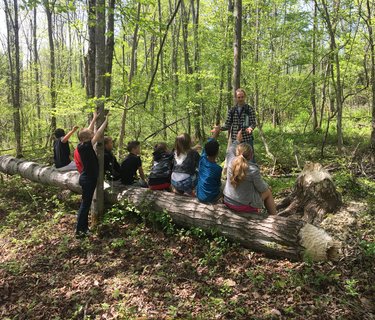Berne moves to update land-use plan
BERNE — Last week, Berne Planning Board Chairman Joe Martin was appointed head of a new comprehensive plan committee that will work on updating the current plan based on community input.
The town board voted unanimously at its Aug. 17 meeting to establish the committee, and authorized Martin to gather people interested in joining it, subject to board approval. The goal, Martin told The Enterprise this week, is to gather a diverse group of residents “and see what fits best for all.”
The current plan was last updated in 2017, when it was officially adopted, but it was created between 2008 and 2011.
Many in the town seem to want another update. Almost every candidate who spoke with The Enterprise during last year’s otherwise contentious town board election, including some who worked on the current plan, agreed that it needed to be revisited for the benefit of the town’s residents.
Nan Stolzenburg, the founder of Community Planning and Environmental Associates, who was the consultant on the current plan, and who informally advised town officials in July on what the process of updating it would look like, also told The Enterprise that the plan is due for a review, given its age.
Although comprehensive plans have a 10-to-15 year scope, “there definitely should be a review every five-to-seven years to make sure nothing in the community has changed,” she said.
Not all towns update their plans as regularly as Berne has since 2011. Guilderland, for instance, adopted its first comprehensive plan in 2001 and, while it planned to start an update in 2019 but was delayed by the pandemic, is just now accepting applicants from which to form a committee.
In neighboring Knox, the last comprehensive plan update was in 2014; however, the chairman of the conservation advisory council there told The Enterprise in June that he expects his board to begin advocating for an update soon. The town of Rensselaerville adopted its comprehensive plan in 2007, and does not appear to have updated it since.
Westerlo recently created a new comprehensive plan, a two-year process that began five years after creating another plan that was never adopted and widely seen as inadequate.
Martin said in an email that he feels Berne’s current plan is “well-written and addresses what the town wants and needs,” but that he wants to know what residents think, and that he personally sees some inconsistencies between the plan’s stated goals for the town and the town’s actual zoning.
“In the first 20 pages of the comp plan you’ll find what is a well-written plan but when you overlap it with the permitted uses you’ll find a disconnect,” he wrote. “This can be found in all areas, including senior housing, agricultural uses (chickens), recreational businesses, etc.
“Now with that considered, you look at the current zoning and find locations that don’t seem to fit,” he continued. “Large lots on waterfront that are zoned RAF [residence/agriculture/forestry] with their surroundings zoned MDR [medium-density residence]. Or zones in the NC [neighborhood commercial] that when overlapped with [a geographic information system] are in wetland areas. So to make a long story short I believe this is where the majority of our time will be spent.”
The key, though, will be public input, which Martin said will be addressed “shortly down the road.” He’s already been hosting land-use workshops this summer, where residents have been gathering to share views, much like they would during a comprehensive plan committee workshop.
“So far we have had great input with residents,” he told The Enterprise in June. “Primarily, the goal I would say overall is to update current zoning to fit the future needs of the community.”
Public input is what will ultimately determine the scope and magnitude of any updates to a comprehensive plan, Stolzenburg said.
The current plan, according to its funding statement, cost $33,000, most of which was covered by a grant from the New York State Department of Agriculture and Markets; the cost to the town, ultimately, was $8,000.
Compared to a plan being built from the ground-up, an update is “sometimes less intensive,” Stolzenburg said, “but it depends on what’s happened in the community. If there aren’t a lot of changes, sometimes it’s a matter of just doing some public input and revalidating the vision and the goals and making sure the plan is still intact … But sometimes things have changed, and there’s a lot more work needed than not. It’s hard to predict.”

